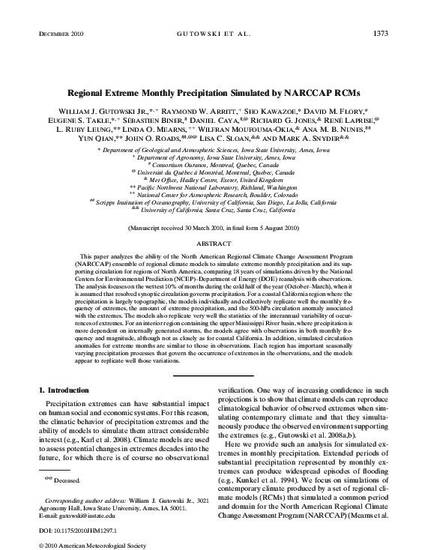
This paper analyzes the ability of the North American Regional Climate Change Assessment Program (NARCCAP) ensemble of regional climate models to simulate extreme monthly precipitation and its supporting circulation for regions of North America, comparing 18 years of simulations driven by the National Centers for Environmental Prediction (NCEP)–Department of Energy (DOE) reanalysis with observations. The analysis focuses on the wettest 10% of months during the cold half of the year (October–March), when it is assumed that resolved synoptic circulation governs precipitation. For a coastal California region where the precipitation is largely topographic, the models individually and collectively replicate well the monthly frequency of extremes, the amount of extreme precipitation, and the 500-hPa circulation anomaly associated with the extremes. The models also replicate very well the statistics of the interannual variability of occurrences of extremes. For an interior region containing the upper Mississippi River basin, where precipitation is more dependent on internally generated storms, the models agree with observations in both monthly frequency and magnitude, although not as closely as for coastal California. In addition, simulated circulation anomalies for extreme months are similar to those in observations. Each region has important seasonally varying precipitation processes that govern the occurrence of extremes in the observations, and the models appear to replicate well those variations.
Available at: http://works.bepress.com/william-gutowski/32/

This article is from J. Hydrometeor, 11, 1373–1379. doi: http://dx.doi.org/10.1175/2010JHM1297.1. Posted with permission.